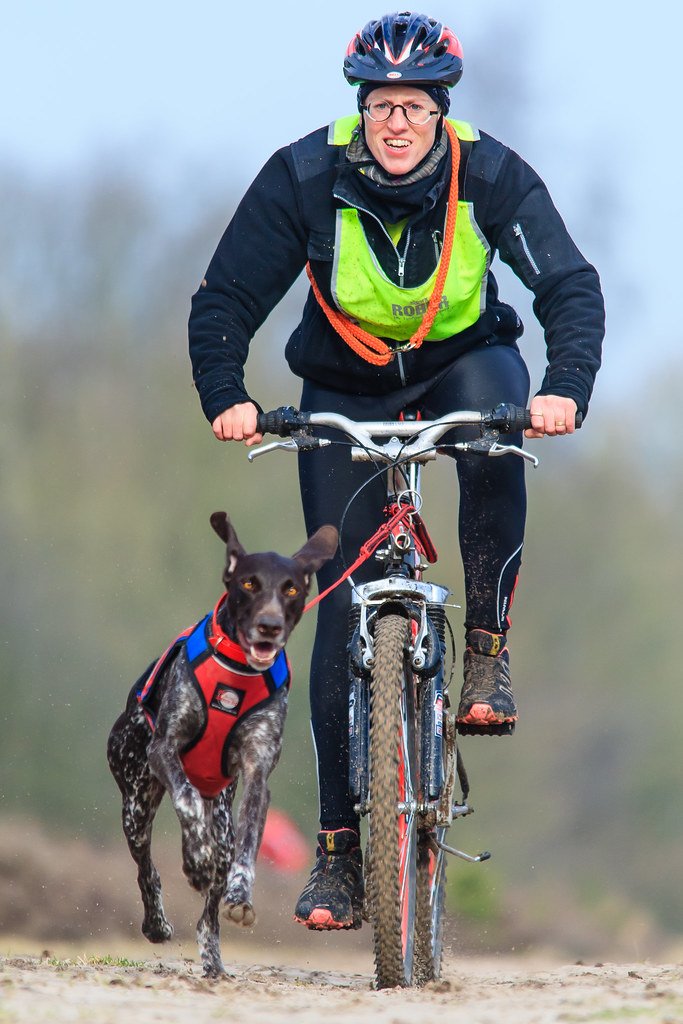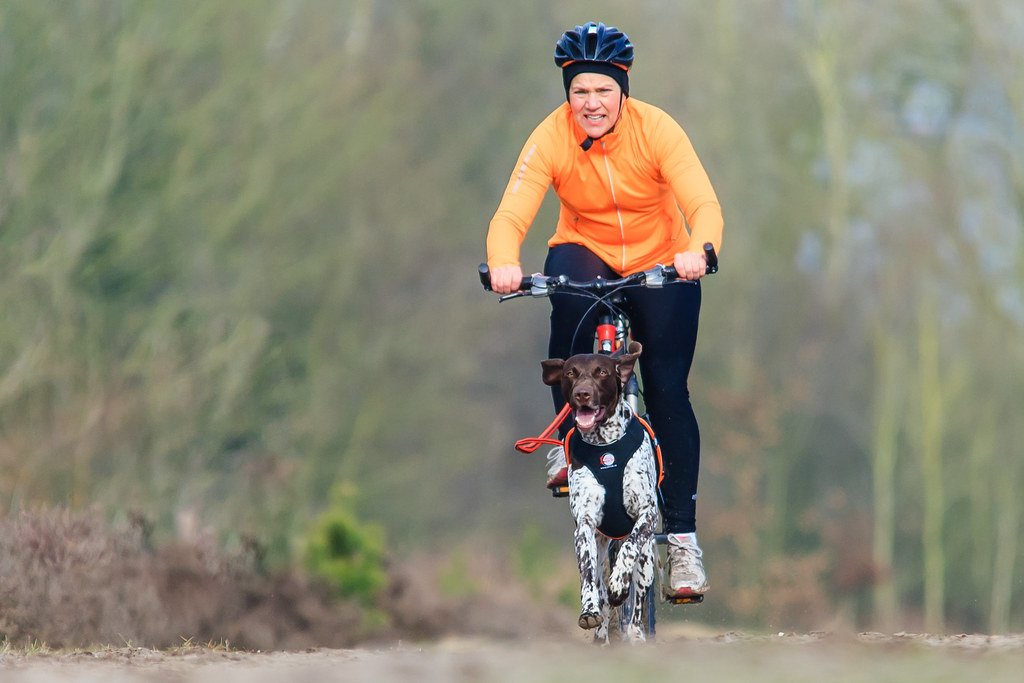Get ready to embark on an exhilarating adventure that takes the boundless energy of your furry friend and the thrill of cycling to create the ultimate partnership between man, machine, and canines. Welcome to the enticing world of bikejoring, an extraordinary sport that pushes the boundaries of traditional dog training and promises to unleash an adrenaline-fueled experience like no other. Pedal and Paws is here to guide you through the exhilarating process of training your beloved pooch to become your trusted running companion, as together you conquer trails, forge a lasting bond, and write a story of teamwork and triumph. So grab your bike, strap on your helmet, and let’s dive into the exciting realm of bikejoring with your four-legged companion!
Table of Contents
- Introduction: The Thrilling World of Bikejoring
- Understanding the Basics: Equipment and Safety Measures
- Building a Strong Foundation: Training Your Dog for Bikejoring
- Hitting the Trails: Techniques for Successful Bikejoring Sessions
- Taking it to the Next Level: Advanced Tips and Tricks for Bikejoring Success
- Q&A
- The Conclusion

Introduction: The Thrilling World of Bikejoring
Welcome to the thrilling world of bikejoring! If you’re an adventurous soul with a love for biking and dogs, then this sport might just be your calling. Bikejoring combines the exhilaration of cycling with the companionship of our four-legged friends, creating a bond and experience like no other.
Bikejoring originated in Europe and has gained popularity worldwide in recent years. It involves a cyclist being pulled by one or more dogs who are harnessed and attached to the bike. As you pedal through various terrains, from wooded trails to open fields, the dogs provide the propulsion, adding speed and momentum to your ride.
Imagine the rush of the wind, the sound of paws hitting the ground, and the adrenaline coursing through your veins as you navigate twists and turns alongside your furry teammate. Whether you’re seeking an adrenaline-filled workout or simply want to spend quality time with your canine companion, bikejoring has something for everyone. So grab your bike, gear up, and join us in exploring the thrilling world of bikejoring!

Understanding the Basics: Equipment and Safety Measures
Equipment:
When it comes to understanding the basics of equipment, it is essential to have a clear idea of what tools and gear you’ll need to undertake any task. Whether it’s a simple DIY project or a professional endeavor, having the right equipment is fundamental. Some common examples include:
- Power tools: These are a must-have for any project involving cutting, drilling, or shaping materials. From circular saws to drills, having a reliable set of power tools can save you time and effort.
- Safety gear: Protecting yourself is paramount, so having the right safety equipment is crucial. Items such as goggles, gloves, helmets, and ear protection should always be on your list.
- Measuring tools: From tape measures to rulers, accurate measurements are the key to successful projects. Investing in quality measuring tools will ensure precision in your work.
- Toolbox: A well-equipped toolbox is every DIY enthusiast’s best friend. It should contain essential hand tools like screwdrivers, wrenches, and pliers, among others.
Safety Measures:
When working with equipment, safety should be your top priority. Here are some key safety measures to keep in mind:
- Read instructions: Before using any equipment, carefully read and understand the manufacturer’s instructions. This will help you operate the tools correctly and avoid accidents.
- Protective clothing: Always wear appropriate clothing to protect yourself from hazards. This may include wearing long sleeves, steel-toed boots, or even a dust mask, depending on the task at hand.
- Work in a well-lit area: Good visibility is crucial to working safely. Make sure your workplace is well-lit to avoid any potential accidents caused by inadequate lighting.
- Keep your workspace organized: A cluttered workspace can increase the risk of accidents. Keep your tools organized and put them away when not in use to prevent trips and falls.
- First aid kit: Accidents can still happen even when taking precautions, so it’s important to have a well-stocked first aid kit readily available. Be prepared to handle any minor injuries that may occur.
Remember, understanding the basics of equipment and implementing proper safety measures is the foundation for any successful project, ensuring both efficiency and personal well-being.
Building a Strong Foundation: Training Your Dog for Bikejoring
Training your dog for bikejoring is an exciting adventure that requires patience, consistency, and a strong foundation. By following these essential steps, you can ensure a safe and enjoyable experience for both you and your furry friend.
1. Basic commands: Before hitting the trails, it’s crucial to teach your dog basic commands such as sit, stay, and come. These commands will not only enhance their obedience but also help in maintaining control during bikejoring sessions. Practice these commands in various environments and gradually increase distractions, ensuring that your dog’s focus is unwavering.
2. Introduce the bike and equipment: Familiarizing your dog with the bike and its associated gear is essential. Start by introducing them to the bike while it’s stationary, allowing them to sniff and investigate at their own pace. Gradually progress to short walks alongside the bike to help your dog become comfortable with its presence and movements.
3. Conditioning and stamina: Bikejoring requires a level of physical fitness for both you and your dog. Begin by gradually increasing your dog’s exercise regime, going on longer walks or runs together. This will build their stamina and ensure they are physically prepared for the demands of bikejoring. Remember to consult with your veterinarian to determine the appropriate level of exercise for your dog based on their age, breed, and overall health.
By laying a solid foundation through basic commands, building familiarity with the bike and equipment, and focusing on conditioning, you can set yourself and your dog up for a successful bikejoring journey. Remember, the key is to progress at a pace that suits your dog’s individual needs, always providing encouragement, rewards, and plenty of love along the way.
Hitting the Trails: Techniques for Successful Bikejoring Sessions
As bikejoring gains popularity among outdoor enthusiasts, it’s important to hone your skills and techniques to ensure successful sessions on the trails. Whether you’re a beginner or experienced rider, these tips will help you make the most out of your bikejoring adventures:
Tips for a Smooth Ride:
- Choose the Right Bike: Opt for a sturdy bike with good traction and a reliable suspension system. It should be able to handle rough terrain and provide stability.
- Tether Properly: Ensure your dog is securely attached to your bike with a bungee line or specialized bikejoring line. This will give your dog freedom to run while allowing you to maintain control.
- Start Slow: Begin with shorter rides and gradually increase the duration and intensity as your dog builds stamina. This will help prevent fatigue and reduce the risk of injuries.
- Communication is Key: Establish clear verbal and hand signal cues to communicate with your dog during the ride. Consistent commands like “go,” “steady,” and “whoa” will help guide your dog and maintain control.
- Stay Safe: Always wear a properly fitting helmet and protective gear. Also, equip your bike with lights and reflective gear to enhance visibility during low-light conditions.
Stay Positive & Have Fun:
Bikejoring is not just about the physical activity; it’s also about forming a strong bond with your furry companion and enjoying the great outdoors together. Remember to stay positive, reward your dog’s good behavior, and always approach your bikejoring sessions with a sense of adventure and enthusiasm. With practice and patience, you’ll soon be conquering the trails like a pro!
Taking it to the Next Level: Advanced Tips and Tricks for Bikejoring Success
Ready to push your bikejoring skills to new heights? We’ve got you covered with some advanced tips and tricks that will take your bikejoring adventures to the next level. Strap in and get ready for an adrenaline rush like no other!
Bikejoring Gear and Equipment
- Invest in a high-quality harness for your four-legged teammate. Look for durable materials, adjustable straps, and chest panels to distribute the pulling force evenly.
- Consider upgrading your bikejoring bike with a specialized attachment system, such as a bikejoring arm or dedicated attachment points. This will provide better control and stability.
- Don’t forget to protect yourself! Invest in a sturdy helmet, knee and elbow pads, and gloves to ensure your safety during your high-speed adventures.
Training Techniques
- Master the command signals: Teach your dog clear commands for turns, speed up, and slow down. Consistent signals will enhance communication and allow for more precise maneuvers.
- Vary your terrain: Mix up your training sessions with different surfaces, elevations, and obstacles. This helps your dog adapt and improves their overall agility and endurance.
- Work on speed and distance: Gradually increase the distance and speed of your bikejoring sessions as your dog becomes more experienced. Ensure you always manage their stamina and monitor for any signs of fatigue.
With these advanced tips and tricks, you’ll be flying through the trails in no time. Remember, practice makes perfect! So get out there, have fun, and enjoy the exhilarating thrill of bikejoring.
Q&A
Can any breed of dog participate in bikejoring?
Yes, many breeds can participate in bikejoring, but it is more suitable for active and high-energy breeds like Huskies, Malamutes, and Shepherds.
Do I need any special equipment for bikejoring?
Yes, you will need a specially-designed harness for your dog, a strong and secure towline, and a bikejoring/bike attachment to connect your dog to the bike. These are essential for a safe and enjoyable bikejoring experience.
How can I introduce my dog to bikejoring?
Start by introducing your dog to the equipment and letting them sniff and get familiar with it. Then, slowly guide them through the process of walking alongside the bike until they are comfortable with the idea of being connected and running alongside it.
Should I start training my dog on a leash before bikejoring?
Absolutely! It’s important to teach your dog basic commands and leash manners before introducing them to bikejoring. This ensures they understand and respond to your cues, making the transition to bikejoring smoother and safer.
What commands are important to teach for bikejoring?
Commands like “gee” (right), “haw” (left), “whoa” (stop), and “let’s go” (start) are crucial for effective communication with your dog while bikejoring. Consistent training and practice are essential for your dog to understand and respond to these commands during your rides.
How can I ensure the safety of both myself and my dog?
Ensure your dog is properly harnessed and attached to your bike with a secure, shock-absorbing towline. Always wear a helmet, gloves, and appropriate safety gear. Start with shorter rides to build endurance and gradually increase distance and speed as both you and your dog become more comfortable and experienced.
Can bikejoring be done in any weather?
While bikejoring can be done in various weather conditions, it’s important to prioritize your dog’s safety and comfort. Avoid extreme heat or cold, and always check the trail conditions to ensure they are suitable for biking or running.
Are there any important tips for beginner bikejorers?
Start with proper training and gradually progress to longer and faster rides. Always listen to your dog’s cues and stop if they show signs of fatigue or discomfort. Joining a local bikejoring group or seeking guidance from experienced bikejorers can also be beneficial for beginners.
The Conclusion
As you embark on the thrilling journey of bikejoring with your furry companion, always remember that safety, patience, and consistency are the keys to success. Through our guide, “How to Train Your Dog for Bikejoring: Pedal and Paws,” we have hoped to equip you with the knowledge and tools needed to create a strong bond between you and your dog, while exploring the freedom of pedal-powered adventures together.
Celebrate small victories along the way, and above all, honor the unique needs and abilities of your four-legged friend. Bikejoring isn’t merely a sport or a way to burn energy; it’s an extraordinary opportunity to deepen the connection between you and your canine partner.
As you zoom along the trails, with the wind in your hair and the pulsating excitement in your pup’s paws, cherish this incredible shared experience. Embrace the sense of unity as you both push your limits and explore the great outdoors, becoming a team with synchronized cadence.
Remember, practice, practice, practice! Each pedal push and each tug of the harness brings you one step closer to mastering the art of bikejoring. So, build upon the foundation we’ve laid out, adapt to your dog’s individual strengths and weaknesses, and embrace the joy and freedom that this exhilarating sport brings.
From the first tentative steps to soaring through the finish line, may your bikejoring journey be filled with endless miles of companionship, adventure, and wagging tails. As you pedal forward with determination, unwavering trust, and unconditional love, may the bond between you and your dog strengthen, leaving paw prints on the trails and etching memories in your hearts.
Pedal on, fellow bikejorers, and let the paws guide you to wonderful new horizons!
As an affiliate, my content may feature links to products I personally use and recommend. By taking action, like subscribing or making a purchase, you’ll be supporting my work and fueling my taco cravings at the same time. Win-win, right?
Want to read more? Check out our Affiliate Disclosure page.